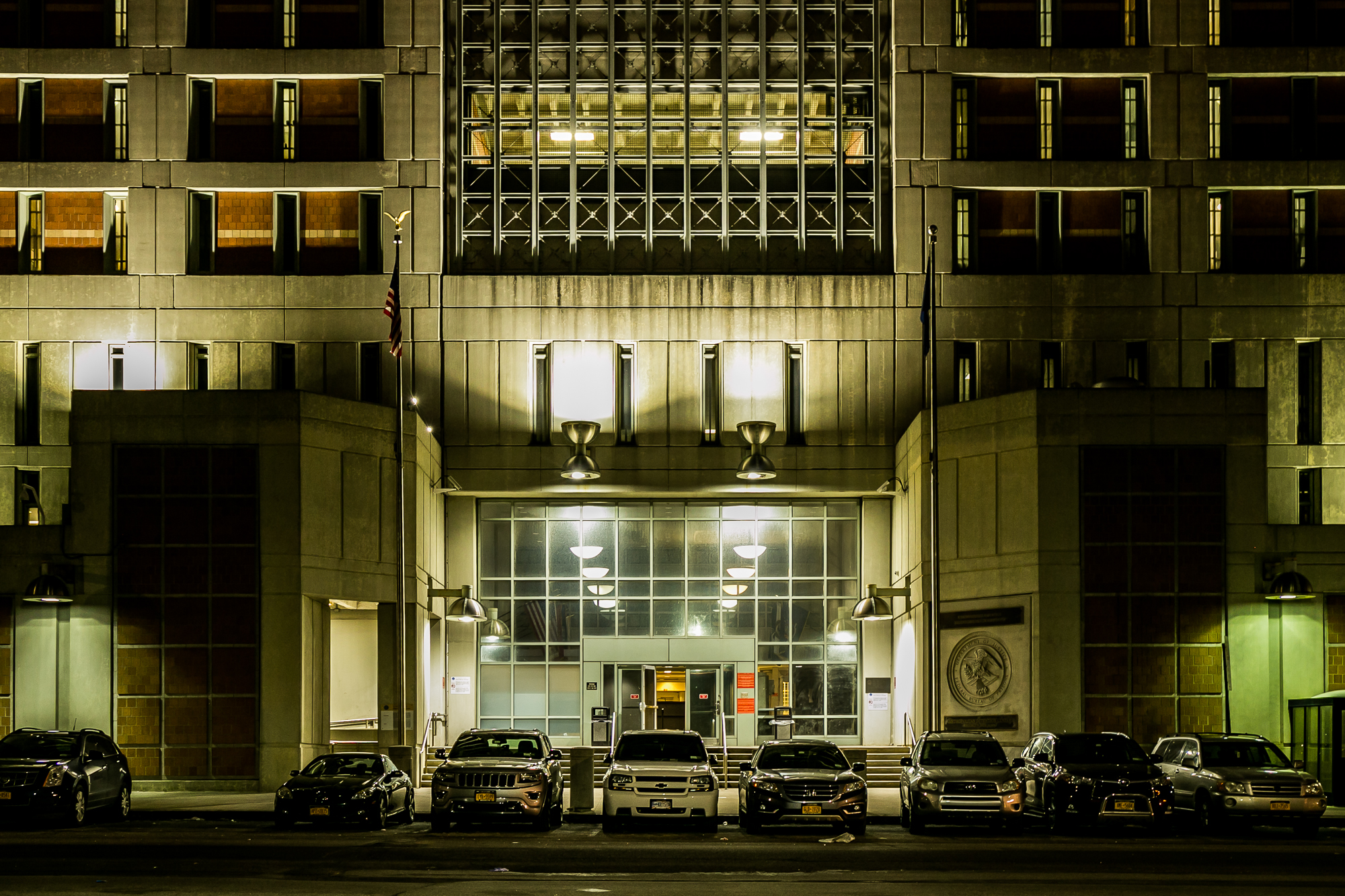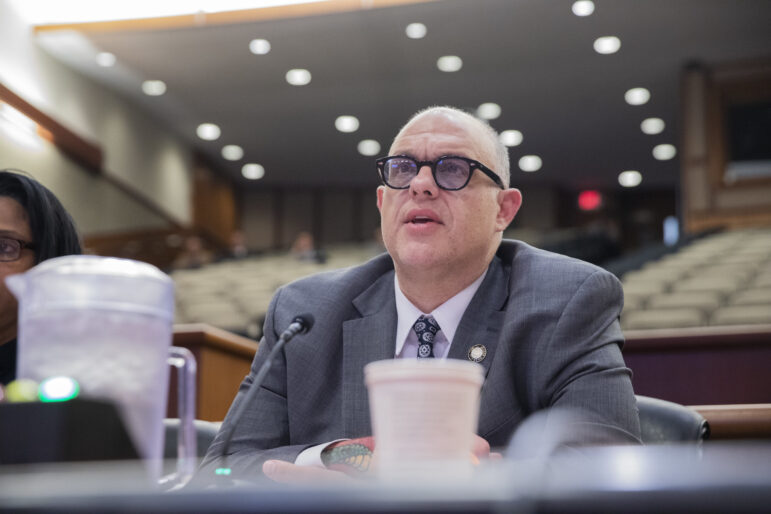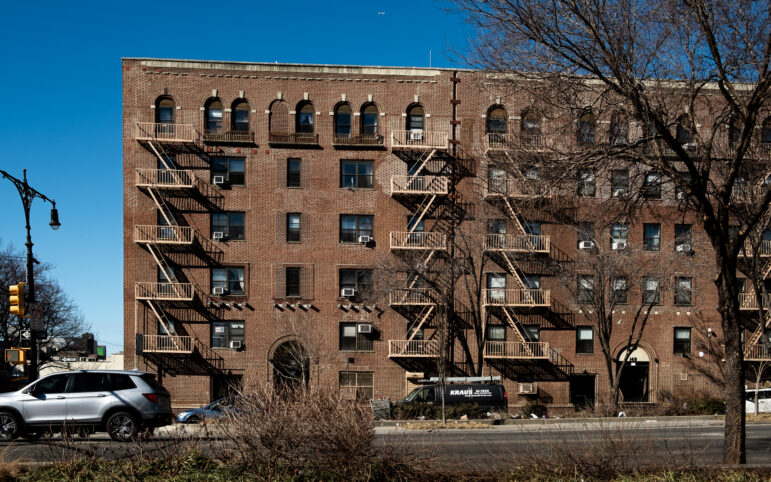“It has been 10 years since my release, and the memory of extreme heat without air conditioning haunts me, especially as the planet continues to warm each year. One of my greatest concerns now is for those still imprisoned.”

Adi Talwar
The Metropolitan Detention Center, a federal detention facility in Brooklyn.Temperatures in New York City have frequently soared over 90 degrees this summer. For many, that is simply too hot to venture outside.
Despite the scorching heat, my commitment to the nonprofit I run in Queens required me to make the trip from Manhattan. Standing on the subway platform, even for a brief five minutes, was nearly unbearable. The underground temperatures felt at least 5 to 10 degrees hotter than above ground. I found myself struggling to breathe, waiting impatiently for the train to arrive.
This wasn’t my first ordeal with such oppressive heat. Years ago, while incarcerated at Alderson Federal Prison in West Virginia, I experienced similar conditions in an unairconditioned sleeping unit. Outside, the temperatures frequently climbed over 90 degrees during the summer months. Inside, our only relief was a large, airplane-like fan at the front of the unit.
We had an ice machine near the fan, and many of us would use the ice to cool ourselves, pressing cold, wet towels against our skin. I later discovered that neither the ice in a towel nor the drinking of water substantially reduces body temperature when overheated.
At FCI Seagoville, a federal prison in Texas, the situation echoes this inadequacy. Inmates there are allotted only a half cup of ice daily for hydration. The facility has a water and ice dispenser, but the water dispensed is warm, and access to ice is severely limited.
When New York City recently experienced a heatwave, the city saw numerous cases of heat exhaustion and heat strokes. Heat exhaustion, a milder form of heat-related illness, can include symptoms such as heavy sweating, weakness, and nausea.
Heat strokes, on the other hand, represent the most severe heat-related illness, marked by a body temperature of 104 degrees Fahrenheit or higher, and can result in confusion, seizures, or worse. Healthcare workers in places like Phoenix, overwhelmed by people suffering from hyperthermia, resorted to using body bags filled with ice to cool down patients after running out of ice baths.
Similarly, excessive heat warnings were recently issued for desert and mountain communities in Southern California, where temperatures have been predicted to climb dangerously high. These conditions mirror the unbearable heat I experienced, and they highlight a nationwide issue affecting vulnerable populations, especially those incarcerated in facilities lacking adequate cooling measures.
Back in prison, the allocation of one large fan and minimal ice proved inadequate. No matter the heat, guards would routinely force us back to our beds, away from the slight relief provided by the fan at the front of the unit. It felt inhumane to endure such conditions, and there were moments I sincerely feared I would die from the heat—death by incarceration, a fate I had never considered before.
It has been 10 years since my release, and the memory of extreme heat without air conditioning haunts me, especially as the planet continues to warm each year. One of my greatest concerns now is for those still imprisoned, particularly during natural disasters when the lack of media coverage and evacuation plans for prisoners starkly contrasts with the general population’s emergency responses. With only a skeleton staff at prisons during such incidents, and those that are there are not medical staff, it can mean that people who are insulin dependent don’t get their medication, or that cancer patients, those with heart disease, seizures or on antidepressants, are at risk for death by incarceration.
According to a study conducted by Texas A&M University, only 30 percent of Texas prison units are air conditioned. As a result, temperatures in Texas prisons “regularly reach 110 degrees and in at least one unit have topped 149 degrees.” This is in direct violation of Federal Bureau of Prisons (BOP) guidelines that state, “Temperature set points will be targeted to 76 degrees Fahrenheit in the cooling season and 68 degrees Fahrenheit in the heating season.”
The BOP is aware of the poor cooling systems in its facilities. Highlighted in its 2020 infrastructure report, the BOP acknowledges that in MDC Guaynabo, a federal prison in Puerto Rico, “The cooling system is in Critical condition; one of the two main centrifugal chillers is down due to unanticipated electrical motor failure.”
In addition to multiple other poor reports, MCC New York (now closed for repairs, at least temporarily) was reported as having a cooling system that was, “Critical. The plenums are unsafe and inefficient. The air handling units have doors that do not work properly and are nearly inaccessible for most staff. . . All of the duct work has insulation within it; unfortunately the insulation has become brittle and is breaking off into the institutional air supply duct work system.”
In response to such dire conditions, the concept of compassionate release emerges as a crucial and underutilized solution. Compassionate release allows for the early release of incarcerated individuals based on extraordinary circumstances such as terminal illness, severe disability, or other significant medical issues that are not adequately managed within the prison environment. Expanding this policy to include those at risk from extreme environmental conditions, such as debilitating heat, is not only a matter of compassion but a necessary action to prevent further tragedies.
Moreover, the cumbersome and lengthy application process for compassionate release further complicates the situation, often delaying decisions until it’s too late for those who urgently need relief. Therefore, it is crucial to reform the process of compassionate release to reflect the immediacy of these risks. Simplifying the application process and broadening eligibility criteria are essential steps toward ensuring that the policy serves its intended purpose—providing timely relief for the most vulnerable, affirming their dignity, and upholding justice.
By streamlining this process and responding proactively to the realities of climate change, we can prevent unnecessary suffering and death, reflecting a justice system that values human life and dignity in the face of escalating environmental challenges.
Evie Litwok is a formerly incarcerated Jewish lesbian and child of two survivors of the Holocaust. She founded and is the executive director of Witness to Mass Incarceration, which is dedicated to fostering economic liberation for formerly incarcerated individuals, system-impacted persons, LGBTQ+ youth, and the migrant community.
Elliott Frey was the researcher for this piece. Frey is a senior at George Mason University studying English with a concentration in writing and rhetoric. As a member of the intern journalism team at WITNESS, Elliott gained valuable experience in writing and research which he plans to use in his future career working for a progressive non-profit organization.








